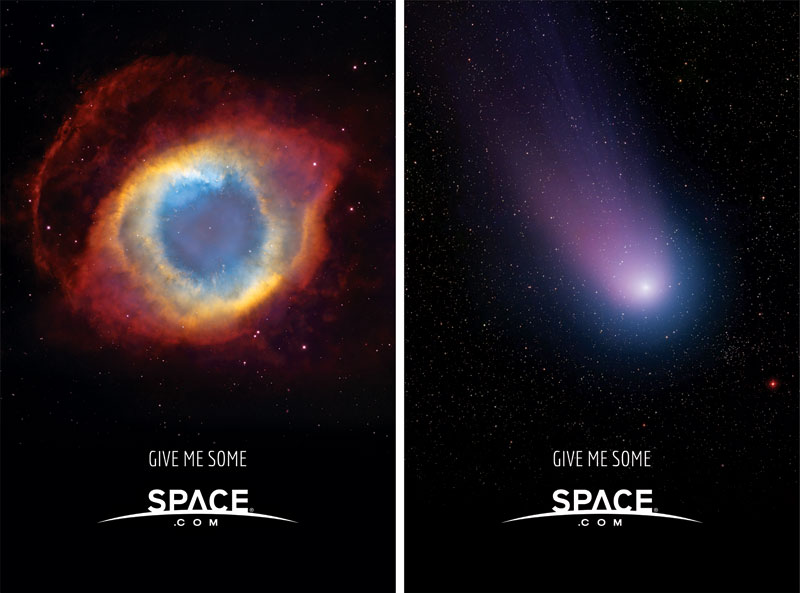Venus and the Moon Dominate Predawn Sky Thursday: How to See It

Early-bird skywatchers take note: If weather permits early Thursday (March 27), a celestial treat awaits observers who venture outside an hour before sunrise as two of the brightest objects in the night sky — Venus and the moon — shine together.
To see Venus and the moon together in the night sky, you'll need clear weather and an unobstructed view toward the east-southeast. You'll immediately notice the crescent moon, which should appear as slender sliver with only 15 percent of its disk illuminated by sunlight. Hovering below and to the right of the lunar crescent will be the planet Venus, shining like a brilliant silvery-white celestial.
Venus and the moon will be separated by roughly 4 degrees, which is roughly equal to one-half the apparent width of your fist held at arm's length. (Your closed fist held at arm's length covers about 10 degrees of the night sky.) [Amazing Photos of the March Night Sky by Stargazers]
While Thursday morning's Venus-moon meet-up is not an exceptionally close approach between the two objects, their great brilliance makes them an eye catching sight in the early morning sky. Of course what we'll see it an illusion of perspective. The moon will be about 226,000 miles (364,000 km) from Earth, while Venus is 292 times farther away at a range of about 66 million miles (106 million km).
Venus just passed its greatest western elongation — its greatest angular distance west of the sun — on March 22. But it will still remain at nearly the same height above the dawn horizon for viewers at mid-northern latitudes, and will shines at nearly the same brilliance for a number of mornings to come.
Venus rises in the east-southeast shortly before 5 a.m. your local time all month long. The eerie, low glimmering of Venus is a harbinger of daybreak, which will begin only 15 or 20 minutes later. In a telescope, Venus's illuminated portion has fattened to just over half full.
And once you know where Venus is relative to the moon, see if you can see it after the sun has come up. You should have no problem glimpsing it in the daytime; a tiny white speck against the blue sky.
Breaking space news, the latest updates on rocket launches, skywatching events and more!
Editor's note: If you snap a great photo of Venus and the moon, or any other night sky view, and would like to share it with Space.com for a story or gallery please send comments and images to managing editor Tariq Malik at: spacephotos@space.com.
Joe Rao serves as an instructor and guest lecturer at New York's Hayden Planetarium. He writes about astronomy for Natural History magazine, the Farmer's Almanac and other publications, and he is also an on-camera meteorologist for News 12 Westchester, N.Y. Follow us @Spacedotcom, Facebook or Google+. Originally published on Space.com.

Joe Rao is Space.com's skywatching columnist, as well as a veteran meteorologist and eclipse chaser who also serves as an instructor and guest lecturer at New York's Hayden Planetarium. He writes about astronomy for Natural History magazine, Sky & Telescope and other publications. Joe is an 8-time Emmy-nominated meteorologist who served the Putnam Valley region of New York for over 21 years. You can find him on Twitter and YouTube tracking lunar and solar eclipses, meteor showers and more. To find out Joe's latest project, visit him on Twitter.


